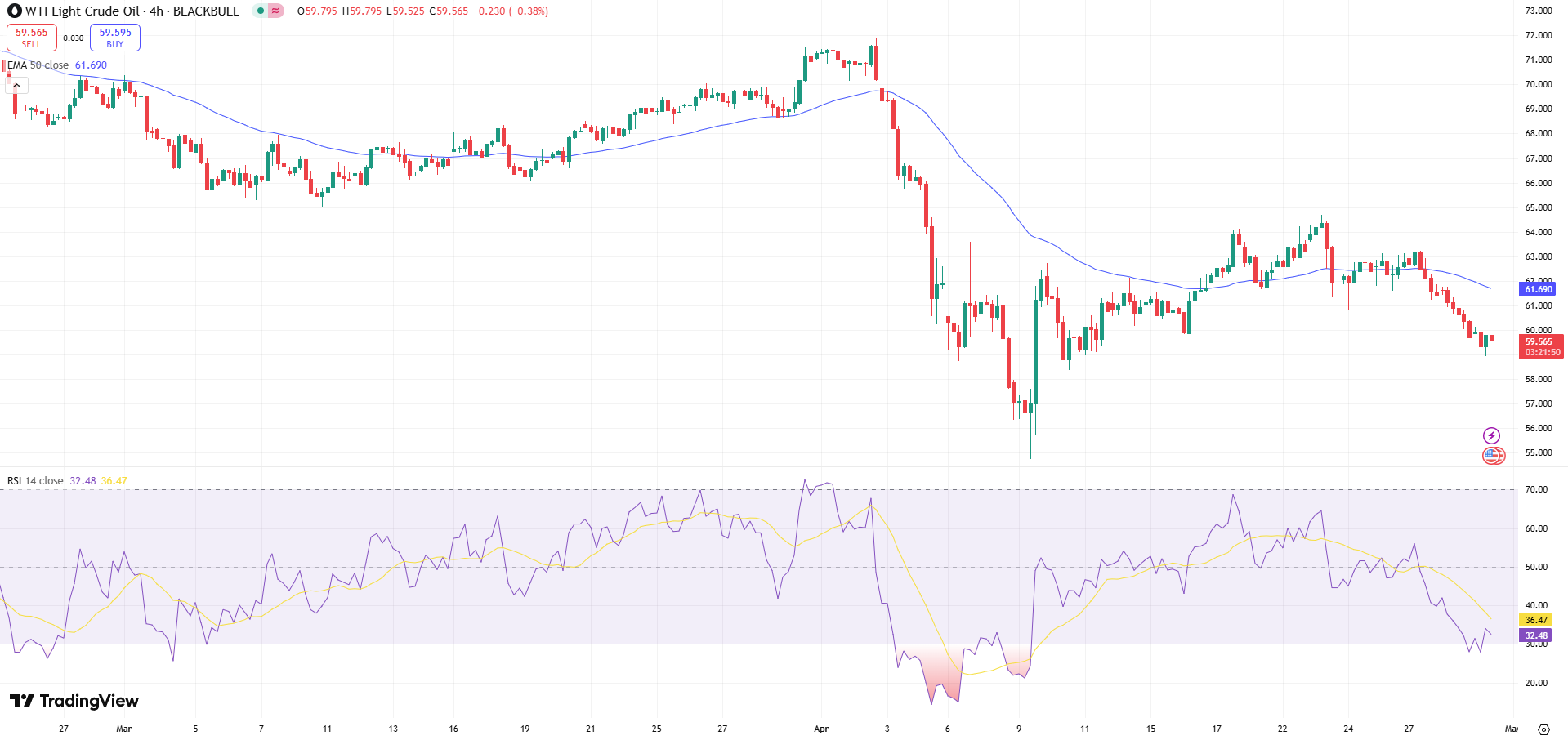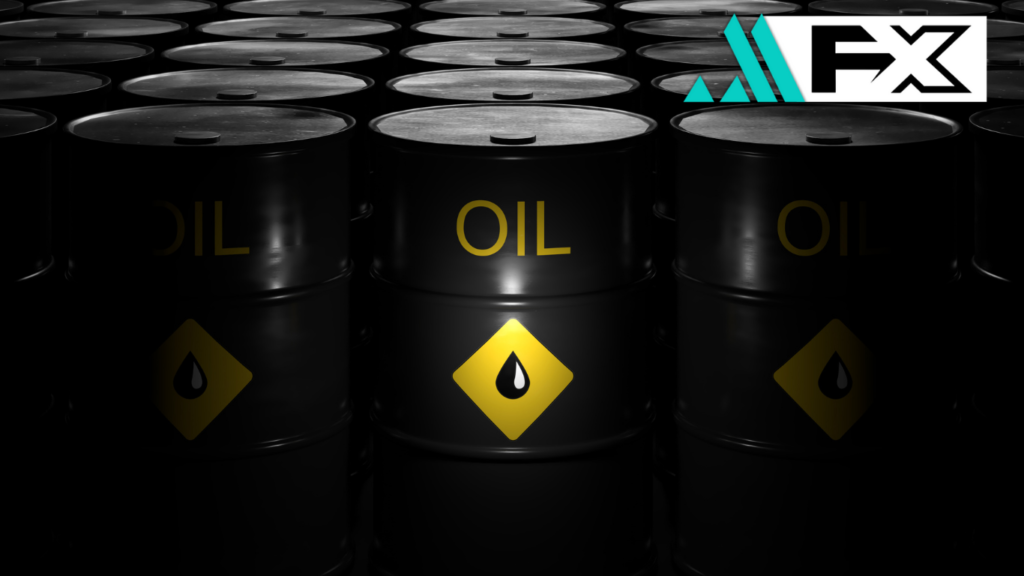Crude oil prices continued their descent on Wednesday, heading toward their steepest monthly losses in more than three years. By 08:13 GMT, Brent crude futures had dropped $1.13, or 1.8%, to $63.12 per barrel. Meanwhile, U.S. West Texas Intermediate (WTI) crude fell $1.11, or 1.8%, to $59.31 per barrel.
April has proven particularly brutal for oil markets. Brent is down 15.4%, while WTI has plummeted 17%—both on track for their worst monthly performances since November 2021.
The decline follows President Biden’s sweeping tariff expansion on April 2, which levied duties on all U.S. imports from China. Beijing responded with its own tariffs, escalating fears of a prolonged trade war between the world’s two largest oil consumers.
A Reuters poll of economists suggested a heightened risk of global recession in 2025 as a result. Chinese factory activity contracted at its fastest pace in 16 months, while U.S. consumer confidence dropped to a near five-year low in April—both signs of softening fuel demand.
OPEC+ Signals Potential Output Increase
Compounding the price drop are fresh concerns around global supply. Several OPEC+ nations are reportedly pushing for increased oil output for a second consecutive month. The group is scheduled to meet on May 5 to finalize production strategies.
Analysts warn that increased OPEC+ output—paired with potential progress in talks involving Iran and Ukraine—could flood markets already reeling from weakened demand. According to a note from PVM Oil Associates:
“OPEC+ may continue to bring extra barrels to the market, just as a global trade war squashes demand growth. That’s a perfect storm for oil bears.”
Market data supports these supply-side fears:
- U.S. crude inventories rose by 3.8 million barrels last week, per American Petroleum Institute figures.
- Official U.S. government data is due at 10:30 a.m. ET, with analysts forecasting a smaller 400,000-barrel increase.

Global Economic Indicators Point to Weakness
April’s macroeconomic indicators paint a bleak picture for oil demand recovery. Key developments include:
- China’s manufacturing PMI: Fell to 49.0, signaling contraction
- U.S. consumer confidence index: Dropped to lowest level since May 2020
- Reuters recession poll: Shows increasing fears of a 2025 slowdown
While recent tariff relief measures around autos slightly eased investor anxiety, oil markets remain under pressure from macroeconomic and geopolitical forces.
Would you like a visual chart of oil price trends to accompany this article?


